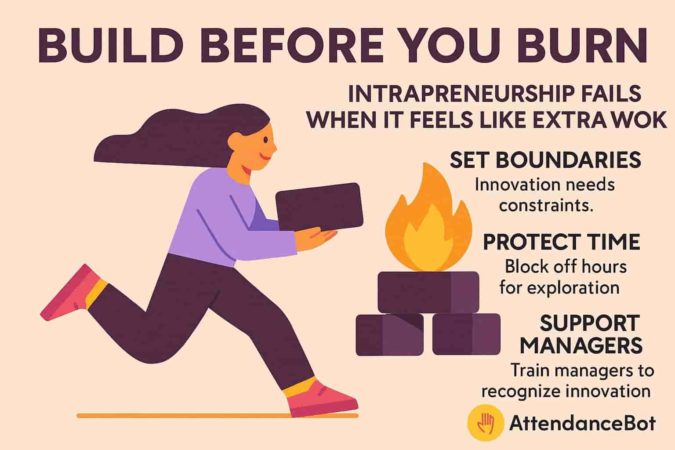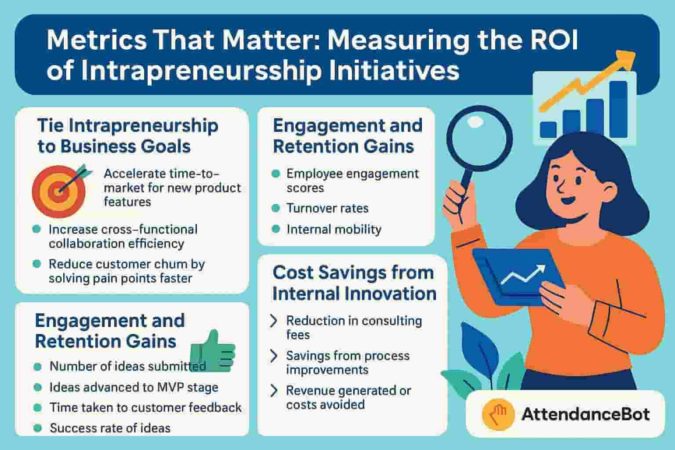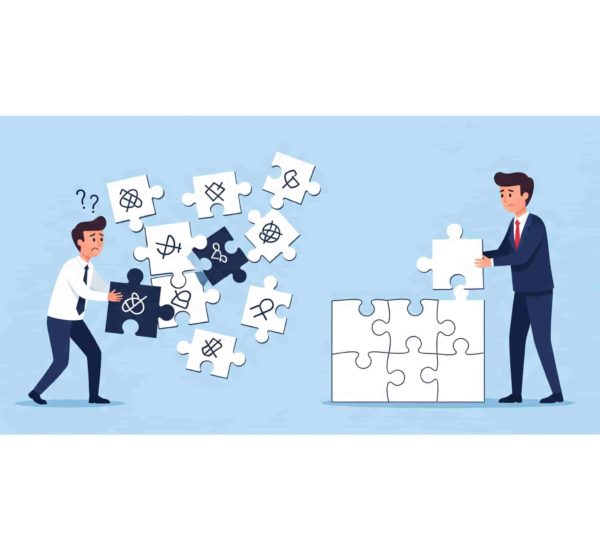In a high-growth company, speed often takes priority over exploration. But as growth plateaus and the pressure to differentiate mounts, a lack of internal innovation can quietly stall momentum. For HR leaders in scaling tech and services firms, the challenge isn’t just attracting talent—it’s activating it. That’s where intrapreneurship comes in.
Defined as entrepreneurial thinking within the structure of an organization, intrapreneurship gives employees permission to experiment, build, and pitch ideas that go beyond their day-to-day roles. When supported correctly, it can lead to powerful employee innovation, without distracting teams from core business goals. More importantly, it creates a workplace culture that drives engagement, fuels retention and reduces reliance on costly external innovation consultants.
As the HR Director, you’re uniquely positioned to champion these efforts. By implementing structured internal startup programs, setting clear guardrails, and removing operational friction, you can help transform passive execution into proactive creativity. The key is building systems that invite bottom-up ideas, encourage smart risk-taking, and scale innovation sustainably across functions.
This article outlines how forward-thinking HR teams can cultivate intrapreneurship in a way that’s measurable, meaningful, and aligned with business strategy.
Here’s a TED Talk about intrapreneurship:
Why Intrapreneurship Matters Now
For fast-scaling tech and services companies, the pace of change outside the business often outpaces what’s happening inside. While teams may be efficient, they’re not always innovative. The result? Missed opportunities, stale processes, and a creeping sense of disengagement among high-potential employees. This is where intrapreneurship becomes more than a buzzword—it becomes a strategic necessity.
By creating intentional space for employee innovation, HR leaders can help unlock the untapped creativity sitting inside every team. Today’s employees—especially knowledge workers—aren’t just looking for stable jobs. They want to contribute, challenge assumptions, and see their ideas come to life. Failing to offer leads to quiet quitting, low engagement, and ultimately, attrition.
Well-structured internal startup programs offer a win-win. They give employees a framework to develop new solutions while giving leadership visibility into scalable ideas that align with business goals. When these programs are backed by HR, not just tolerated by leadership, they become sustainable engines for continuous improvement.
And in a world where the cost of external consultants, new hires, or acquisitions keeps rising, leveraging internal know-how is not just more efficient—it’s smarter. Organizations that prioritize intrapreneurship build a competitive edge from within.
Build Before You Burn Out
Intrapreneurship fails when it feels like extra work. HR’s job isn’t to bolt on innovation—it’s to bake it into the flow of work. If your employees need to burn nights and weekends to pitch an idea, the system is broken.
That’s where smart structure wins. A well-designed internal startup program gives employees room to experiment without derailing business priorities. It’s not about chaos. It’s about contained creativity.
Here’s how HR can make it real:
- Set Boundaries: Innovation needs constraints. Define what qualifies as a pitch-worthy idea and how it ties to company goals.
- Protect Time: Block off hours for exploration. Quarterly sprints or monthly innovation hours can work—just make it consistent.
- Support Managers: Train team leads to recognize, not resist, employee innovation. If they feel threatened, the system won’t scale.
- Cut Admin Load: Use tools like AttendanceBot to remove friction from daily workflows. When the basics run on autopilot, people have headroom to think bigger.

Spot the Spark: How to Identify Intrapreneurs Before They Burn Out or Leave
Building a culture of intrapreneurship starts with the people already inside your organization, but spotting them takes more than reviewing performance metrics or promotion cycles. Intrapreneurs are not always your top salespeople or the most visible team leads. They’re often the employees quietly fixing broken systems, suggesting new tools, or collaborating across departments without being asked. And without the right attention, they’re also the ones most likely to disengage or leave for companies that give them more room to grow.
So, how can HR become the sensor for employee innovation potential?
1. Start by Rethinking Your Definition of High Potential
Most companies equate “high potential” with “leadership track.” But intrapreneurs aren’t always future managers. Some of the best internal innovators thrive outside of the hierarchy—they’re doers, builders, and connectors. They may not want to manage a team, but they’re deeply invested in improving how the business works.
Instead of looking only at leadership behaviors, start identifying:
- Problem spotters: Employees who regularly flag inefficiencies and propose ideas to improve them.
- Tool creators: People building internal tools, automation, or workflows to make life easier, even if it’s not their job.
- Lateral thinkers: Team members who bridge silos by connecting ideas or people across functions.
- Constructive agitators: Those who challenge the status quo respectfully but persistently, always looking for a better way.
These traits don’t always surface in standard performance reviews—so consider gathering 360 feedback, surveying managers about team problem-solvers, or watching for signals in Slack, Notion, or other async tools.
2. Create Low-Risk, High-Visibility Opportunities
Once you’ve identified potential intrapreneurs, don’t bury them in bureaucracy. Give them ways to test their ideas in controlled environments. This is where internal startup programs shine.
Offer:
- Pilot projects: A 30-day sandbox to test a new process, automation, or customer idea.
- Innovation sprints: Short-term, cross-functional teams tasked with solving one specific internal problem.
- Pitch platforms: Let employees submit ideas and vote on others. Tools like Slack-integrated bots or internal forums can make this seamless.
- Mentor networks: Pair intrapreneurs with senior sponsors who can help refine their ideas and navigate the business.
The point isn’t to guarantee every idea gets greenlit. It’s to create visible, meaningful channels where employee innovation is encouraged, evaluated, and celebrated.
3. Recognize, Don’t Just Reward
Too often, employee recognition is tied only to results. But intrapreneurial work involves risk, failure, and learning. If you want to cultivate a culture where employees take initiative, you need to value effort, not just output.
Try:
- “Best Idea That Didn’t Ship” awards – for those who pushed the envelope and learned something important.
- Internal spotlights – showcase intrapreneurs in all-hands meetings or internal newsletters.
- Leadership listening sessions – let intrapreneurs present ideas directly to decision-makers, even if they’re early-stage.
This kind of cultural reinforcement signals that intrapreneurship isn’t a one-off program—it’s part of how your company grows.
4. Don’t Let Admin Burden Kill Momentum
Intrapreneurs thrive in environments with space to think. If their time is consumed by repetitive admin work, their creativity stalls. HR plays a key role here by streamlining operations and using automation to protect mental bandwidth.
This is where tools like AttendanceBot can quietly power innovation. By automating things like leave management, shift planning, and time tracking, employees—and their managers—get back hours every week. That time can be repurposed into thinking, testing, and building.
Metrics That Matter: Measuring the ROI of Intrapreneurship Initiatives
For an innovation-focused HR Director in a scaling tech or services company, demonstrating the real value of intrapreneurship programs is critical. Without measurable outcomes, these initiatives risk being dismissed as nice ideas but costly distractions. Yet, properly tracked, intrapreneurship can become a powerful lever to improve engagement and retention, and even reduce innovation spend.
So, what metrics matter?
Tie Intrapreneurship to Business Goals
First, HR should ensure that intrapreneurship efforts clearly align with the company’s strategic priorities. This means defining upfront what success looks like—not just in innovation outputs but in business outcomes. For example, an internal startup program might aim to:
- Accelerate time-to-market for new product features
- Increase cross-functional collaboration efficiency
- Reduce customer churn by solving pain points faster
Each of these business goals then maps to measurable indicators, making it easier to demonstrate ROI.
Engagement and Retention Gains
One of the most direct benefits of fostering employee innovation is improved engagement. Studies show that employees empowered to innovate feel more valued and connected to their work. HR can track:
- Employee engagement scores: Use regular pulse surveys to compare innovation program participants vs. others.
- Turnover rates: Track if intrapreneurship participants stay longer or move up more quickly.
- Internal mobility: Are intrapreneurs moving into new roles or leadership tracks?
Showing that your intrapreneurship initiatives correlate with higher engagement and retention strengthens the business case.
Innovation Pipeline Velocity and Quality
Quantifying how many ideas enter and progress through your innovation pipeline is another key measure. HR can partner with innovation or product teams to track:
- Number of ideas submitted through internal startup programs
- Percentage of ideas advancing to the prototyping or MVP stage
- Time taken from idea submission to first customer feedback
- The success rate of ideas (e.g., ideas that generate revenue, reduce costs, or improve satisfaction)
This data can be visualized in dashboards, highlighting the program’s tangible output.

Cost Savings from Internal Innovation
Finally, measuring cost impact compared to external consulting or R&D investments is powerful. Internal innovation often costs less and delivers faster ROI. HR can help estimate:
- Reduction in external consulting fees due to internally generated solutions
- Savings from process improvements or automation projects launched by intrapreneurs
- Revenue generated or costs avoided through intrapreneur-led initiatives
When HR presents these figures alongside softer metrics like engagement, the full value of intrapreneurship becomes undeniable.
Backing the Builders: Training, Tools, and Support for Emerging Intrapreneurs
Spotting potential intrapreneurs is just the start. To turn their employee innovation potential into real business value, HR must build an ecosystem that empowers and supports these internal entrepreneurs.
Here’s how:
Skill Development: Training for Innovation
Many employees have great ideas but lack formal training in innovation methods. HR can introduce targeted programs that teach:
- Entrepreneurial mindset: Emphasizing ownership, resilience, and customer focus
- Design thinking: Building empathy and rapid prototyping skills
- Agile working: Encouraging iterative development and cross-functional collaboration
These programs can be delivered via workshops, online courses, or internal “innovation boot camps.” Continuous learning ensures intrapreneurs grow their skill sets as the business scales.
Mentorship and Peer Networks
Innovation thrives in communities, not silos. HR can create mentorship programs that pair emerging intrapreneurs with seasoned leaders who provide guidance, feedback, and sponsorship.
Equally important are peer networks where intrapreneurs share lessons, challenges, and wins. These groups foster motivation and reduce isolation, making innovation sustainable.
Technology and Collaboration Tools
Removing friction is essential to keep momentum. HR can work with IT to provide intrapreneurs with tools that facilitate rapid idea validation and collaboration. Examples include:
- Innovation management platforms that track idea pipelines
- Slack or Teams channels dedicated to brainstorming and feedback
- Project management tools designed for agile workflows
Additionally, leveraging automation tools like AttendanceBot can free up administrative time for intrapreneurs and their managers, letting them focus more on creative work and less on logistics.
Protecting Time and Energy
Finally, HR must recognize the risk of burnout. Employees juggling day jobs and innovation projects need protected time and clear expectations. Policies might include:
- Allocated innovation hours or “creative Fridays”
- Adjusted workload during sprint cycles
- Recognition that failure is part of the process and encouragement to learn from it
Conclusion
Cultivating intrapreneurship isn’t just a buzzword—it’s a strategic imperative for HR leaders driving growth in fast-moving companies. By measuring the right outcomes and providing targeted support through training, tools, and time, HR can unlock powerful employee innovation that fuels business success. Internal startup programs become more than experiments—they evolve into engines of engagement, retention, and sustainable competitive advantage.
With structured systems in place, HR can help transform creativity into measurable impact, proving that innovation thrives best when it’s empowered from within.



